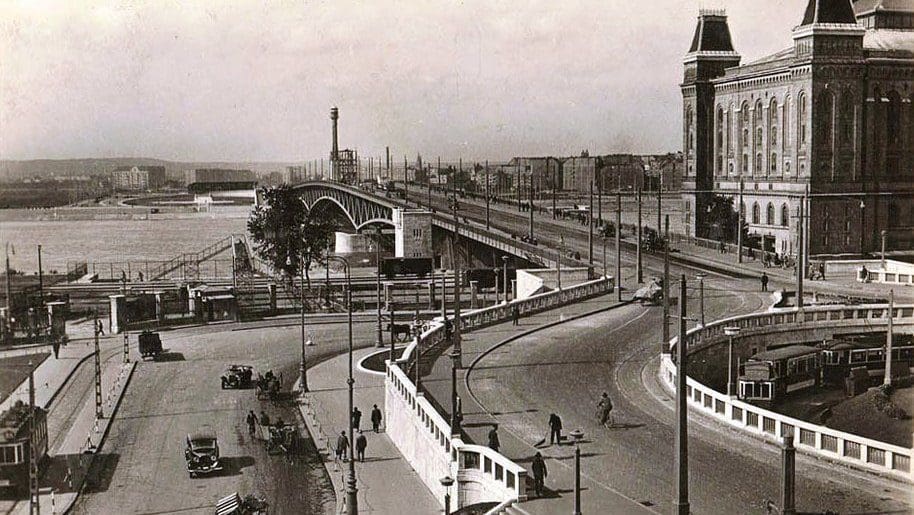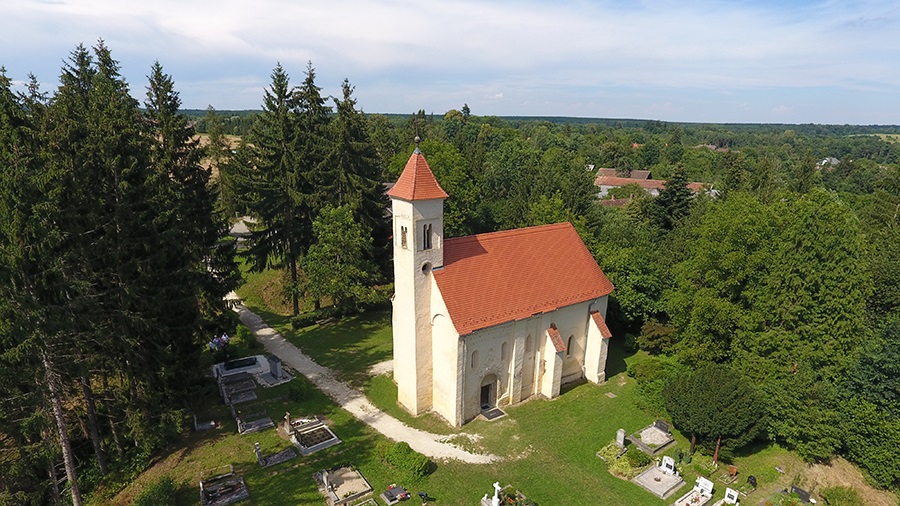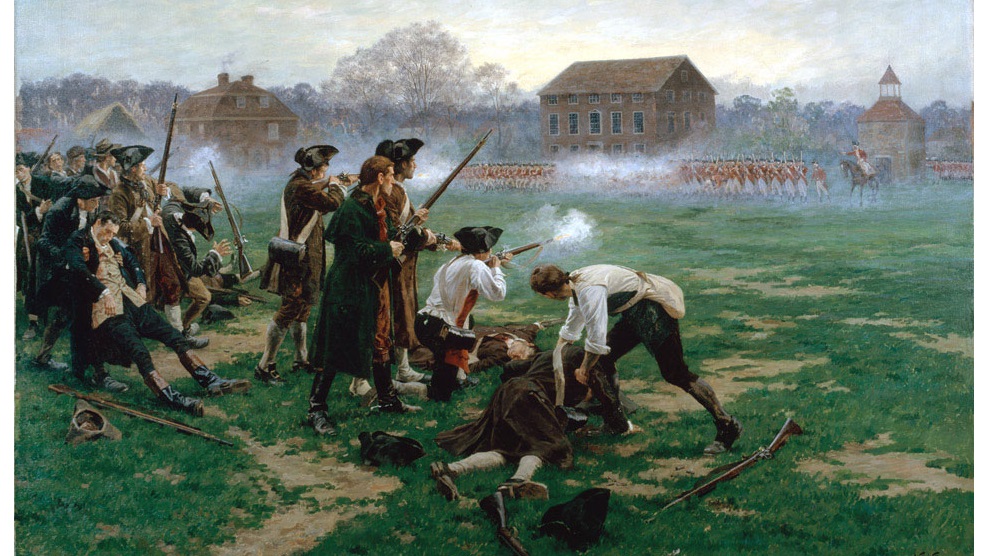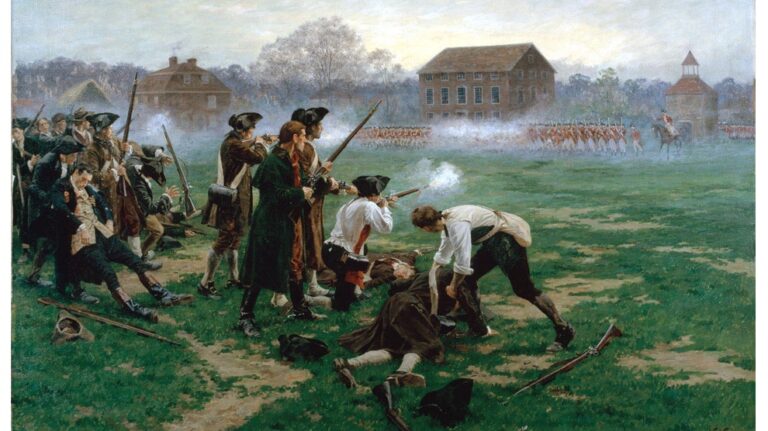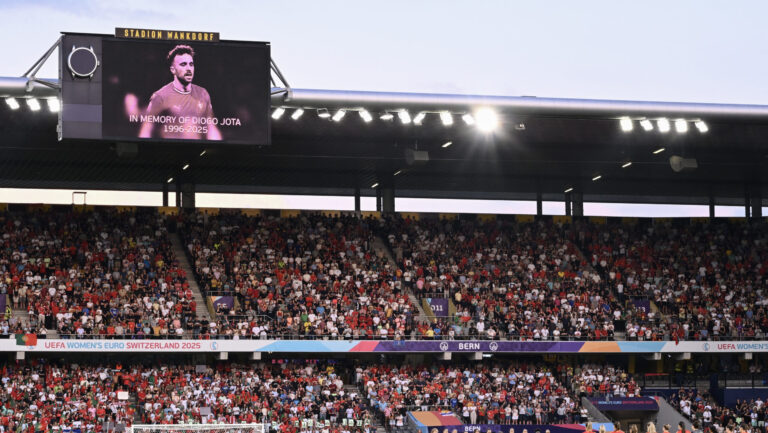At the dawn of the 20th century, Budapest began to develop and grow rapidly—at the time, the Hungarian capital’s population increased significantly, and large-scale construction was also underway in various parts of the city. As a result of the boom, Budapest’s borders gradually expanded, which required further infrastructural developments.
As early as 1908, the city administration of Budapest already had the idea of building another bridge across the Danube in the southern part of the city, in the place where Petőfi Bridge stands today, which would have helped relieve the other bridges of the capital. However, this idea competed with the proposal of another bridge planned for the northern section of the Danube in Óbuda. Although the decision ultimately fell on the latter, due to the outbreak of World War I, the plans for the construction of both bridges were put to a halt for a while.
More than two decades later, in 1930, the proposal to build a bridge in the part of town called Lágymányos was placed on the agenda again:
the construction of a new bridge, which was named after Regent Miklós Horthy in honour of the 10-year anniversary of his administration, finally began.
Seventeen designs were submitted for the competitive tender, three of which were awarded and another three were purchased by the capital’s leadership. The first prize was won by architects János Kossalka and Gyula Walder’s chain bridge; the second prize by bridge-building engineer Győző Mihailich and architect Iván Kotsis’ arch bridge; and the third prize by engineers Jenő Kiss and Pál Sávoly’s tied-arch bridge.
An interesting thing about each design is that the main beams were raised above the level of the deck structure, since according to the original tender, the construction of an overhead bridge would not have been economically viable. The reason for this was that, at the time, the gigantic Elevator House and several smaller buildings on Boráros Square were located in the immediate vicinity of the bridge, which would have had to be significantly rebuilt due to the low ramp on the Pest side of the bridge and hence further increased the costs. As a solution, the bridge’s ramp was raised and extended to the mouth of Mester Street.
Thus, with the modified plans, the construction of the bridge’s present-day overhead structure could be carried out.
After the bridge’s completion in 1937, a loop-shaped final stop of the tram route on Grand Boulevard was established at the Pest side of the bridge, which was surrounded by roadways and the rails of Tram 66 travelling to South Buda. With the extended ramp, it was also possible to avoid the rebuilding of the Elevator House on the right of the bridge.
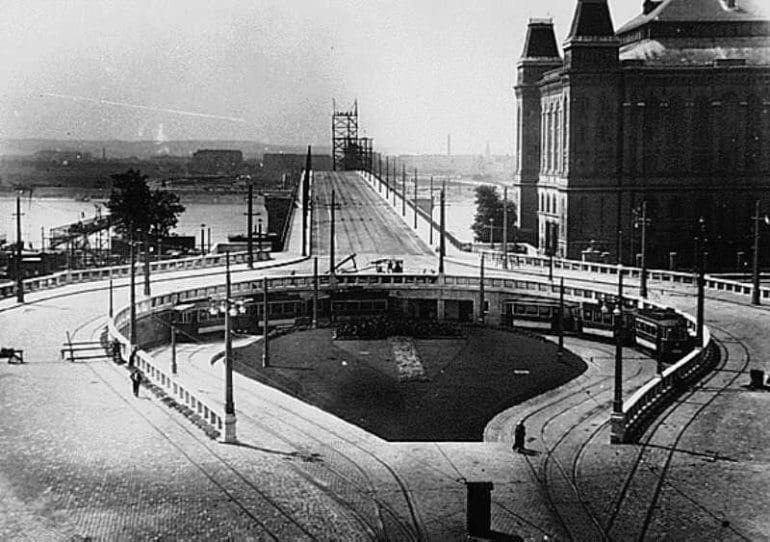
Later, the final stop at the Pest side was abolished, and stops with platforms placed in between the tracks were built on the ramp. Since 1952, Tram 4–6 has also been passing through today’s Petőfi Bridge to Buda.
However, during World War II, just like the other bridges of the capital, the retreating German soldiers did not spare the Miklós Horthy Bridge either:
it was tragically blown up on 14 January 1945.
Although in the same year, the Soviet army built a temporary military bridge in its place, its complete restoration took more than seven years. The rebuilt structure of the bridge was handed over on 22 November 1952 and was renamed Petőfi Bridge in honour of renowned Hungarian poet Sándor Petőfi.
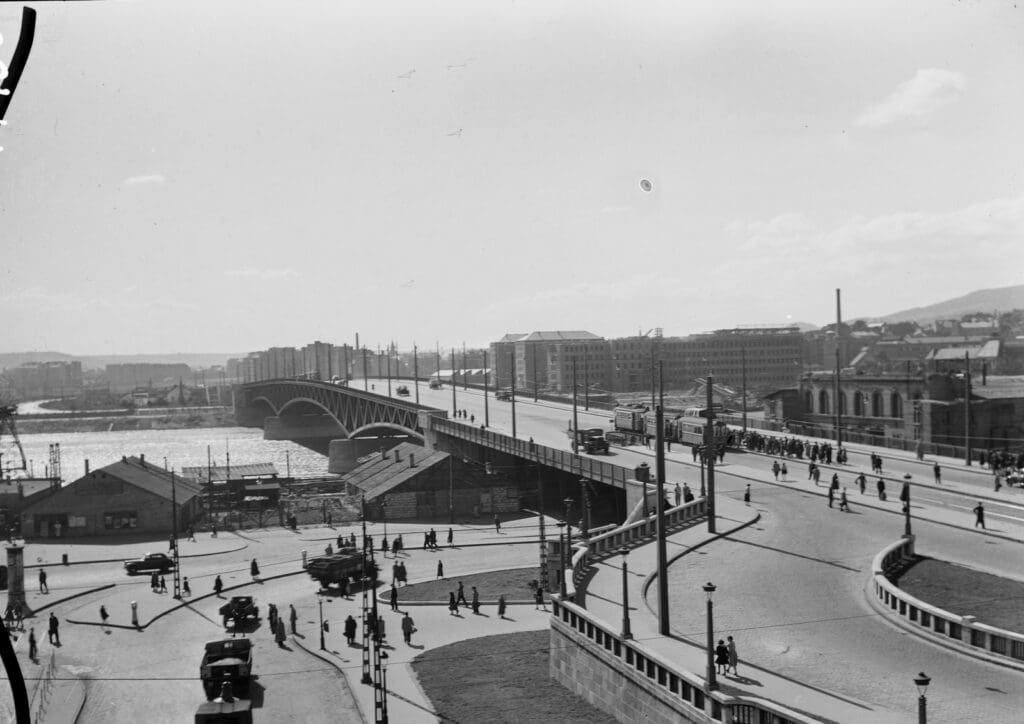
Another reconstruction project took place between 1979 and ’80, when the width of the sidewalks was narrowed, thereby eliminating the bicycle lanes, but at the same time creating a three-lane roadway, with tram lanes running in the middle.
In recent years, plans for the renovation of Petőfi Bridge have come up again—the damaged coating of its structure and the trams travelling on it at rather low speeds also give good reasons for a timely modernisation. The preparatory work for the reconstruction began in 2020: a public consultation was launched at the invitation of the BKK Centre for Budapest Transport, which is now being followed by further preparations. After completing the reconstruction of Chain Bridge, Petőfi Bridge is expected to be renovated this decade, too.
Related articles:
Click here to read the original article.

